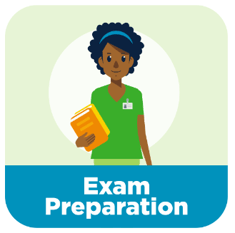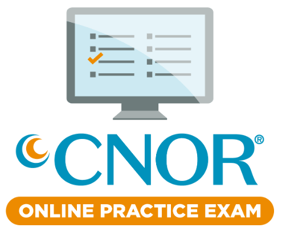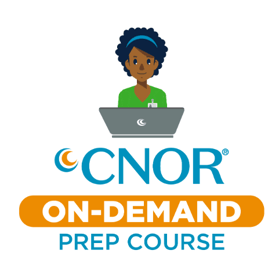Certification allows nurses to demonstrate their commitment to exceptional patient safety. Nurses who attain certification, and the facilities that support them, demonstrate a commitment to improving patient outcomes and mastering the knowledge it takes to do so. Facilities value having certified staff, but a lot of nurses are not certified upon hiring. Getting your staff certified may sound like a daunting task, however, CCI has many resources available to assist in getting your staff certified.
We interviewed Deborah Jones, EdD, RN, MSN, CNOR, Clinical Nurse Educator, Operative Services UCLA Health - Center for Nursing Excellence, and learned more about the certification process at her facility. She provided insight on what CCI resources she uses to certify her staff. Information and quotes are provided courtesy of Deborah Jones, EdD, RN, MSN, CNOR.
Q. What resources do you take advantage of that CCI offers?
Although CCI offers a variety of study materials including, CNOR Exam Study Outline, Live Pep Courses, On-Demand Prep Courses, and webinars, Deborah indicated the CNOR Online Practice Exam is the resource she often takes advantage of. The CNOR Online Practice Exam contains 200 practice questions covering all the CNOR exam subject areas. “I’ve taken the exam and I am mentoring people who want to take the exam. There are more resources now than before.“

UCLA Health also takes advantage of our CNOR Exam Prep Book. Most individuals looking to get certified are not able to afford all the preparation materials that are beneficial to passing the exam. “We purchased the books because a lot of the staff can’t afford all the books they’re asking for. We’re looking at potentially $600-700 worth of text.” Deborah encourages her staff to study and provides the necessary resources to do so.
Q. As a nurse educator, do you integrate the resources we have into your program? If so, how?

Having resources available at your facility is important and how you implement them into your program can make the difference in your staff being successful on their certification exams. Jones has an innovative way to take the information included in the CNOR Practice Exam and implementing studying into her nurses’ everyday lives. “In the past, I have used the practice exam questions. I target the people who are studying for CNOR and send them 1 question a week. It can be overwhelming working full-time and studying for this exam. The questions also give a rationale when they answer the question. That helps solidify the information in their minds.”
CCI has created a CNOR Exam Study Outline, which provides a list of recommended resources to assist nurses with exam prep. This is a great avenue for introducing study materials to nurses, and ensuring they know what is available to them and what to use. “I recommend the study material. I have to search through the study material to see what’s applicable. However, the resources are current and good resources. So, on occasion, I do implement the resources in my clinical education. Especially, with new hires. We have new students in a periop101 program so it’s very helpful there.”
Q. What resources do you recommend to other nurse educators?
“The best resource CCI offers is the focused CNOR Exam Study Outline. In days past, people didn’t know how to study for the exam and they typically over studied. But now it tells them what to study, and where it is, and it gives them a focused resource, which keeps them from over studying.”
 In addition to our CNOR Practice Exam, the CNOR On-Demand Prep Course is also a focused program that includes a recorded exam review covering all seven exam subject areas, case studies to apply your knowledge of key concepts, guidance on question format and study strategies, and a breakdown of key terms and skills you’ll need to know. This is a great resource for those looking to study on their own time at their own pace.
In addition to our CNOR Practice Exam, the CNOR On-Demand Prep Course is also a focused program that includes a recorded exam review covering all seven exam subject areas, case studies to apply your knowledge of key concepts, guidance on question format and study strategies, and a breakdown of key terms and skills you’ll need to know. This is a great resource for those looking to study on their own time at their own pace.
Having more focused study plans allows students to retain important information while preventing them from getting overwhelmed or burnt out. “What we want them to be able to do is balance their lives and this is really a very good way of doing it. Instead of looking at, for example, the AORN Guidelines, the book is 6 inches deep. Where do you start? You tend to overread and too much information just falls off the top. So now that it’s focused and someone has taken the time to do it, it’s beneficial."
“First of all, plan your time. Second, give yourself at least 4-6 months to study. This is not an exam you can cram for. Also, what would be the point of cramming? The point is to get the information, retain it, and use it. That happens over time. So my biggest piece of advice is to give yourself plenty of time to study. The study guides are also super helpful. I just love it.”
Q. How does your staff benefit from the resources we offer?
With Jones' guidance and exam prep recommendations, nurses at UCLA successfully pass their certification exams. “Typically they will obtain their credential. Our facility offers a bonus for obtaining your CNOR and they are also reimbursed for the cost of the test when they pass. The CNOR Take 2 option is really nice because for just a little bit more money it gives them the option of taking it again if they are not successful. However, they have a better chance of being successful now that they have more focused learning.”
In addition to our individual CNOR Take 2 program, we also offer a CNOR Exam Take 2 Facility Program. The CNOR Exam Take 2 Facility Program is available to hospitals and allows facilities to purchase bulk exam seats, at a discounted rate, to certify their staff. Nurses receive two exam attempts within a 12-month period. Terms and conditions apply.
Certified nurses demonstrate a commitment to upholding the highest standards in patient safety. Facilities that value certification and support their staff, now have more resources available to assist in getting their staff certified. “The CNOR exam gives you tools, lots of them, to offer patient care that is high quality and it makes them better nurses. Better nurses, better patient care. Better patient care, better outcomes, and that's what we are all about.”


